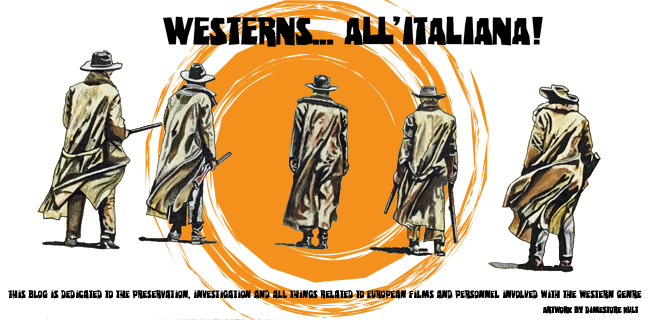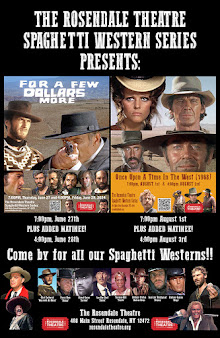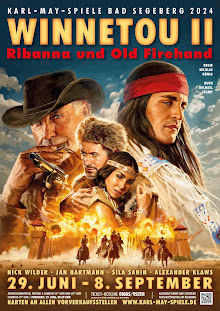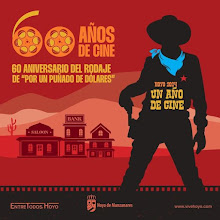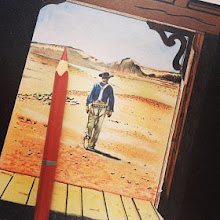Giulio Petroni, the director of the
already mentioned “Death Rides a Horse”, makes another brief stop on a train at
the “Tucumcari” in La Calahorra for “And for a Roof a Sky Full of Stars” (“…e
per tetto un cielo di stelle”, 1968). We
can only see some shots of the criminal clan momentarily commanded by Federico
Boido awaiting the arrival of the true leader of the gang, played by an
autumnal Anthony Dawson. This unequal film,
with the great Guiliano Gemma as the absolute star, shares memorable moments
with others of the same caliber as the later comedic and buffoonish spaghetti
of the seventies. And, although the
scene described does not include the presence of Gemma, everything seems to
indicate that the Italian star was in La Calahorra shooting a sequence not
included in the final cut [12].
[Anthony Dawson in “And
for a Roof a Sky Full of Stars”, getting off a train in La Calahorra.]
Gianni Garko was without a doubt another
of the most popular stars of the golden age of Eurowestern.
Shortly after getting into the skin of the mythical
character/icon Sartana for the first time, he arrives in Granada to star in The
Avenger of the South “The Taste of Vengeance” (“I vigliacchi non pregano”,
1968), an irregular western with a twilight tone very different from those
belonging to his long saga of the
player bounty hunter, more oriented towards the pulp.
The director, Mario Siciliano, is not able to give the
film rhythm despite the correct invoice that he demonstrates, neither in its
original Italian version nor in the very shortened Spanish copy.
The best asset of the film is found in the cast, with
good performances by Garko himself, Ivan Rassimov and the Spanish actress Elisa
Montés. Once again, the
Bancos de Fonelas boulevard, the Guadix caves, the Hernán-Valle plains and a
location map in the Gorafe desert were recorded on the celluloid of this
Western film.

[“The Taste of
Vengeance”. Gianni Garko and Elisa Montés on a long walk through the desert
plains of the Rambla del Grado, in Hernán-Valle. In the background, the
omnipresent Mencal hill, recognizable in a multitude of westerns filmed in this
area.]
This is a good place to take a refreshing
break on our particular tour of western Granada locations, which has included
the beginning and most of the splendor of the genre in the province during the
sixties. In subsequent installments we will comment on the subsequent and
indelible traces that Sergio Leone left on these lands, with the construction
of a stable western town in La Calahorra for Hasta que su hora arrived “Once
Upon a Time in the West” (“C'era una volta il west”, 1968) as a high point. In
the same way, we will analyze the locations and details of the rest of the
Granada filming of the current during the seventies and eighties of the last
century. Francisco Arco
12] In an interview included in the
magnificent book Giuliano Gemma. A land, a sword and a gun; Dilating Minds
Editorial; 2019; P. 224, by Belén Mateos Járrega, the production director of
this film, José Salcedo, says that a scene was shot in La Calahorra with the
presence of the two protagonists of the film, Giuliano Gemma and Mario Adorf,
together with the Spanish secondary actor Víctor Israel. Apparently, Mario
Adorf refused to perform this scene because he was deeply anti-Semitic,
alluding that Víctor Israel was Jewish, simply because of his last name and
without any other convincing evidence. Finally, at Adorf's insistence, they
chose another actor who appeared with his back to the camera so as not to lose
continuity with previous scenes in which Víctor Israel intervened. It is not
surprising, then, that this eventful sequence was finally discarded in the
final cut of the film.
